The Red Sea (Egypt) is one of the seas where you will find the most ship wrecks , both war ships and merchant ships. The great amount of ship traffic, dating back to the time of the pharaohs, the difficult navigation due to the multitude of shallow coral reefs (in many cases just a few centimetres below the surface), strong currents as well as storms have always made sailing there complicated and dangerous, especially in earlier times when there was no satellite technology.
We start our trip from the port of Hurgada in one of the ships of the Blue Force Fleet in the Red Sea. Our destination is the so-called route of the wrecks and reefs, where we can photograph some of the most emblematic ship wrecks that exist in the world. Wreck photography is one of the scenarios that any underwater photographer gets seduced by, but, at the same time, it has a certain level of difficulty.
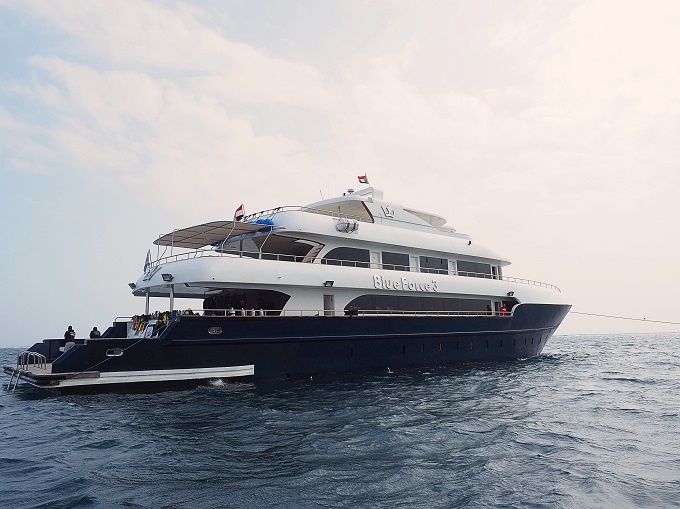
Juan José Saéz • OM-D E-M1 Mark II • M.Zuiko Digital ED 12-40mm F2.8 PRO
Diving inside a sunken ship is in fact quite risky because in some of these ships, entry is only possible through narrow hollows and gates. Also, you should never forget that warship wrecks can have twisted plates, irons, cables, etc. that will make us take extreme precautions so that we do not harm ourselves or our equipment. On the other hand, we have to act extremely technical and move with an impeccable buoyancy, otherwise the turbulence generated under the fins will lift the sediment deposited in the wreck which will end up ruining our photos . The ideal thing would be if the photographers entered first to be able to take their shots without worrying about suspended particles.

Juan José Saéz • OM-D E-M1 Mark II • M.Zuiko Digital ED 8mm F2.8 PRO
• PT-EP14 • PPO-E04 • 2 x UFL-3
The positioning of lighting systems is also a very important aspect to consider, for two fundamental reasons: Firstly, because many times we will have to go through narrow places, and secondly, the angle of incidence of the light must be adequate, lengthening the support arms as much as possible to illuminate the scene correctly and to illuminate the object of desire with the lowest angle of possible incidence of suspended particles. The diffusers of the flashes are of great help here.
Regarding the necessary photographic equipment, it is advisable to use bright, good-quality lenses with fisheye or wide-angle focal points. On the one hand, the wrecks to be photographed sometimes do not have enough "camera shot" for another type of lens and on the other hand, these lenses allow us to get closer, which means we have less amount of water between the subject to be photographed and the camera. This results in better use of light and less particles in suspension. Also, macro lenses would be a good choice as the sunken structures harbour a good number of nudibranchs, coral crabs, prawns and other tiny species that you wouldn’t want to miss on your photos.
On this trip I used the following equipment:
• Olympus OM-D E-M1 Mark II inside the Olympus PT EP14 waterproof housing
• M. Zuiko 7-14mm F2.8 PRO
• M. Zuiko 8 mm F1.8 FISHEYE PRO
• M. Zuiko 60 mm F2.8 macro
• 2 x Olympus UFL-3 flashes with diffusers
• 2 x video lights Big Blue CB15000P
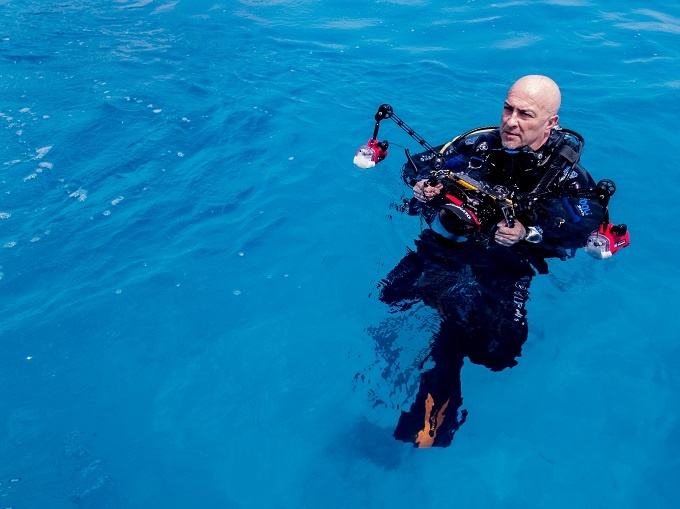
Diver Juan José Saéz with his equipment • shot with Tough TG-5
Knowing the history of the ships in which you are going to dive is fundamental because it changes the perspective of immersion. The knowledge of what happened at that time, either for war reasons or by accident, means that you have greater respect for visiting the wreck. The silence and the unique atmosphere of the time that is reflected in each pore of the ship makes us feel privileged because we have the opportunity to relive a part of history. On the other hand, you will also be aware of how nature takes possession of what is in it, colonizing any structure with life. Banks of fish of different types, anemones, soft and hard corals, turtles, invertebrates and innumerable organisms are gradually winning the game to the inert and dead structure of the ship creating a spectacular reef of life.
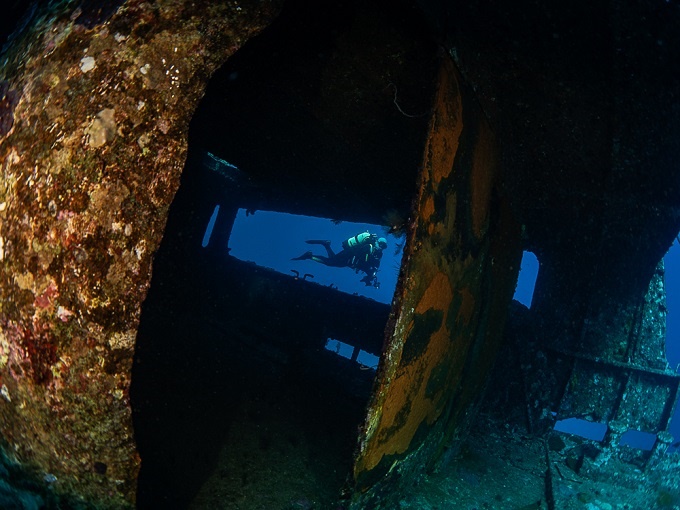
Juan José Saéz • OM-D E-M1 Mark II • M.Zuiko Digital ED 8mm F218 PRO
• PT-EP14 • PPO-E04 • 2 x UFL-3
SS THISTLEGORM
The SS Thistlegorm is one of the most famous and most often visited ship wrecks worldwide. It is located near Sha'ab Ali (northern area of Ras Mohammed). This English freighter, 131 meters in length, was heading towards the Suez Canal to bring supplies for the British army. It was intercepted during the early hours of October 6, 1941, by two German bombers. Two bombs entered the bridge impacting one of the powder magazines, which caused a tremendous explosion that literally teared off part of the deck of the ship, making a great hole through which the ship is currently accessed. Of the 48 people who formed the crew 9 lost their lives.
The propeller is 31 meters deep at the deepest part and rises up to 15 meters in the part of the bow.
The Thistlegorm warehouses were full of BSA and Norton bikes, trucks, cars, airplane wings, boots, rifles and ammunition. On deck you can find one of the train carriages and another one lies a few meters away from the wreck, together with some anti-aircraft guns that now point to the bottom of the ocean.
The wreck was discovered by Jaques Cousteau in 1956. He made his discovery public in his documentary "The world of silence" but did not reveal its coordinates. Three decades later, a group of Egyptian recreational divers met with him and from that moment on, the wreck became one of the top destinations for recreational diving.
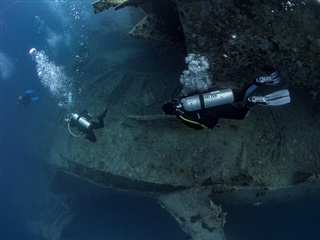 |
 |
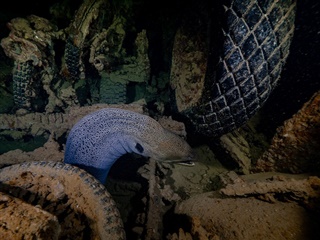 |
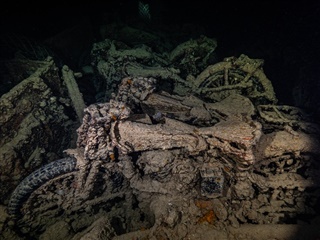 |
Juan José Saéz • OM-D E-M1 Mark II • M.Zuiko Digital ED 7-14mm F2.8 PRO
• PT-EP14 • PPO-E04 • 2 x UFL-3
ULYSSES
The Ulysses is one of the oldest wrecks of the Red Sea. The accident causing its existence occurred on August 16, 1887 due to a collision with the Small Guba Island reef. At first, the damage seemed small and the pumps of the ship managed to reduce the water that entered. The captain asked for help from another boat and waited for 3 days while being stranded on the reef. On August 19, the help arrived and the crew of all the ships that came worked hard for almost 2 weeks emptying the ship from the heavy cable coils it was carrying. But nothing prevented the opening from becoming larger and at the end, on September 5, 1887 the ship sank and is now resting its 95 meters in length at 29 meters depth.
Being so old, this boat is completely colonized by hard and soft corals, table corals and spectacular acropods that cover the entire deck. The strong currents, which sometimes complicate the dive, are responsible for this proliferation of life providing the necessary nutrients. Banks of crystal fish, anemones with clownfish, moray eels, crocodile fish, catfish, elusive tunas and even dolphins, make this dive a true wonder for underwater photography in the remains of this hundred-year-old shipwreck.
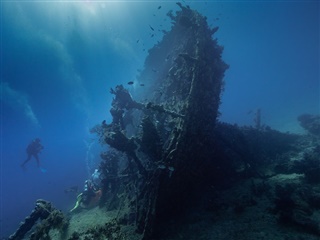 |
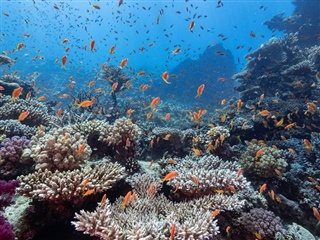 |
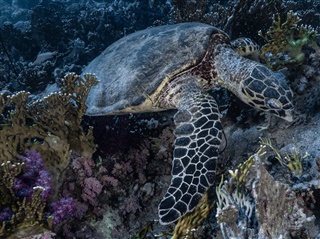 |
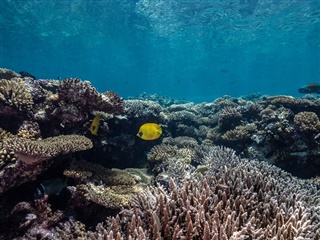 |
Juan José Saéz • OM-D E-M1 Mark II • M.Zuiko Digital ED 7-14mm F2.8 PRO
• PT-EP14 • PPO-E04 • 2 x UFL-3
CARNATIC
The Carnatic was a steamship of 90 meters in length and 2000 tons of weight built in 1860. Its propulsion was motor and sail. Working together, these were able to make the ship move at 12 knots, an exceptional speed for its time.
With 230 people on board and loaded with port wine, cotton, metal plates, copper ingots and about 40,000 pounds in gold coins, the Carnatic departed from Suez on September 12, 1869, bound for Bombay. 24 hours after setting sail, strong winds made it deviate from the original course. Captain Philip Buton Jones, who perfectly knew the area , remained in charge day and night to personally direct the navigation. At one o'clock in the morning, he changed shifts with his second in command and everything seemed to go well until, at 1:30, the ship collided against the reef of Abu Nuhas.
The captain evaluated the damages and did not consider them serious. Knowing that another ship of the same company, the Sumatra, made the same route in the opposite direction, he decided to wait for an evacuation – that never occurred. Two days after running aground, a heavy storm broke out and the bilge pumps could no longer handle so much water. The evacuation began and when most of the women and children were in the lifeboats, the Carnatic literally broke in half, killing 27 passengers.
After the ship had sunk, an operation was carried out to recover the copper and gold transported by the ship.
The Carnatic lies between 18 and 29 meters deep and is a wreck of great beauty, especially the part of the bow and its colour explosion, upholstered with soft, hard corals and anemones offers an incredible photographic shot. We can also find crocodile, scorpion and stone fish, schools with thousands of crystal fish that move at the same time, angel fish, emperor, turtles, lion, anthems, crossbow and nudibranchs, and these are just some of the species that invite you to visit this incredible wreck.
 |
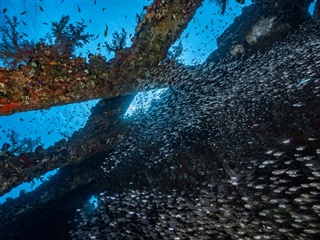 |
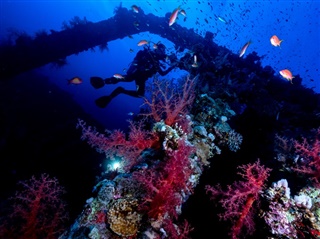 |
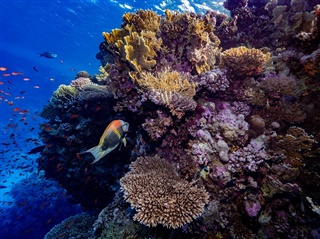 |
Juan José Saéz • OM-D E-M1 Mark II • M.Zuiko Digital ED 7-14mm F2.8 PRO
• PT-EP14 • PPO-E04 • 2 x UFL-3
GIANNIS D
This freighter, named “Shoyo Maru” and later “Markos”, was built by the Japanese shipping company Kuryshima in 1969 and acquired by the Greek company Danae that would rename it as Giannis D. It measured 87 meters in length and weighed almost 3000 tons. On April 29, 1983, it was traveling from Rijeka (Croatia) to Jeddah (Saudi Arabia), transporting a cargo of wood. When crossing the channel of Suez, it took course towards the south but some circumstance changed its course to the northeast of the reef of Abu Nuhas which it hit. At 4:00 in the morning the captain issued a distress call and proceeded to order the evacuation of the ship. In less than 15 minutes the ship was at the bottom of the sea, 27 meters deep. Two years later and due to the shallow water, which makes it vulnerable to storms, the Giannis D broke in half.
Light plays an essential role in the photographic beauty of this wreck. In the engine room, the bridge and the cabins, underwater photography is particularly important. Schools of innumerable species of small fish have found shelter in this wreck as well as emperor fish, bat, napoleons, moray eels, clown, buffalo parrot, lion and stonefish.
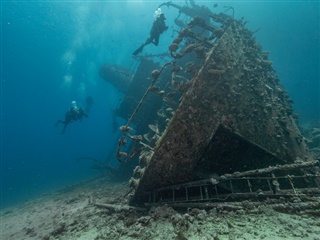 |
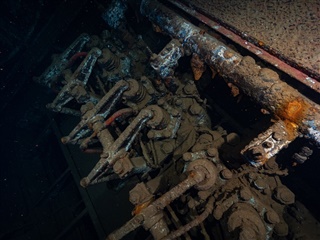 |
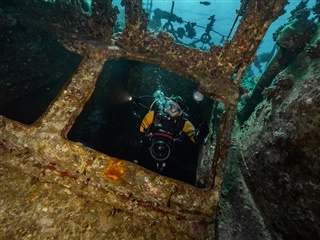 |
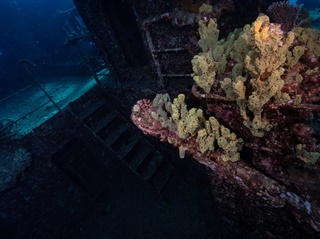 |
Juan José Saéz • OM-D E-M1 Mark II • M.Zuiko Digital ED 7-14mm F2.8 PRO
• PT-EP14 • PPO-E04 • 2 x UFL-3
In short, any immersion into a wreck is a unique experience, touching us both personally and photographically
.
Comments
Show more comments (9)